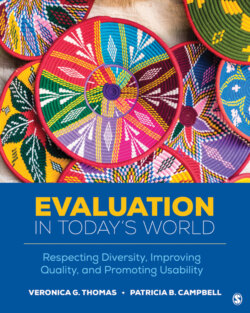Читать книгу Evaluation in Today’s World - Veronica G. Thomas - Страница 138
На сайте Литреса книга снята с продажи.
Leander L. Boykin
ОглавлениеEarning a PhD from Stanford University in 1948, Leander L. Boykin became the first African American to achieve this distinction. After postdoctoral work at Harvard University in 1957 and 1958, Boykin served in various positions including, among others, professor of education at Southern University in Baton Rouge, Louisiana, and dean and researcher at Florida A&M University in Tallahassee. Boykin’s dissertation and subsequent publication, “Negro Differentials in Education” (1950), was probably one of the most notable and comprehensive evaluative contributions of an African American researcher in the pre-Brown era. In this evaluation study, Boykin examined the 17 Southern states, which required completed separation of schools for Black and white populations.1
Across his various studies, Boykin (1949, 1950, 1954) evaluated differentials in financial resources, teacher salaries, and interpretation of quantitative data for segregated schools. Interestingly enough, Boykin (1950) indicated that
Reprinted with permission of Florida A&M University Libraries, African American College.
in sharp contrast to the usual procedure of evaluating one’s findings in terms of practical implications, or attempting to establish a general set of principles, the data and not the findings on differentials in Negro education are evaluated and interpreted. The purpose of evaluating the data rather than the findings is to determine the adequacy of Negro education. By educational adequacy is meant (1) what the state is doing, what activities it is engaging in to provide education for the average child in that state; (2) the educational benefits that the average child of the nation receives as a result of educational activities of the nation; [and] (3) the extent to which Negro education is supported and maintained in terms of ability. (p. 536)
1 These 17 states included Alabama, Arkansas, Delaware, Florida, Georgia, Kentucky, Louisiana, Maryland, Mississippi, Missouri, North Carolina, Oklahoma, South Carolina, Tennessee, Texas, Virginia, and West Virginia.
After the Brown v. Board of Education decision of 1954, Boykin continued his work. In his 1957 article, “Let’s Eliminate the Confusion: What Is Evaluation?,” he argued that the ultimate purpose of evaluation is to improve an educational program and offered a set of guiding principles, characteristics, and functions of effective evaluation. Boykin (1958) also viewed evaluation as a “group endeavor” or cooperative process involving multiple stakeholders and an endeavor that “strengthens democracy because it is dependent upon the use of democratic procedures for its successful fulfillment” (p. 532).
Furthermore, being somewhat ahead of his time in this respect, Boykin (1958) stressed that a sound program of evaluation requires the use of both quantitative and qualitative data. He used evaluation and evaluative data as a vehicle to argue for equity and social justice during a time in this country when overt racism and legal discrimination were acceptable. Through his work, he concluded that in the future the problem of “Negro” education would be viewed no longer as a race problem or a Southern problem, but as a problem of American democracy in which Negroes are regarded as citizens along with all other Americans (Boykin, 1950, p. 540).
